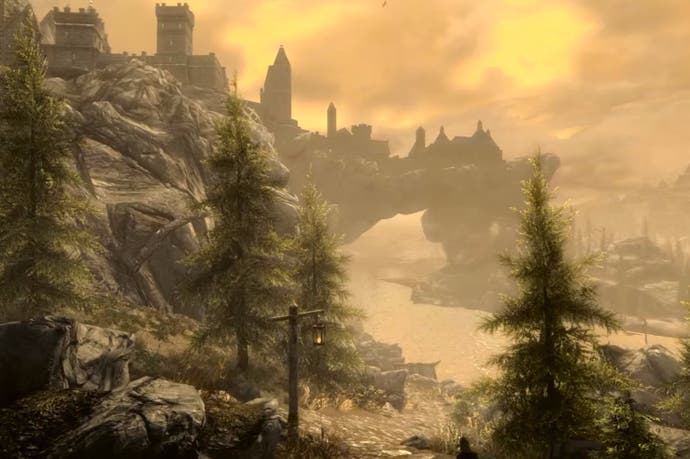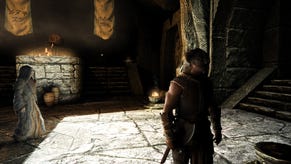Digital Foundry vs Skyrim Special Edition
Console frame-rates analysed, plus a look at the game's key visual upgrades.
It's early days with our analysis of the new Skyrim Remastered, with work only beginning proper on the day of release. Our initial objectives here were pretty straightforward - we wanted to get a grip on PS4 and Xbox One performance metrics after the various issues that have befallen Fallout 4, not to mention the profound problems encountered in the last-gen PS3 release. Secondly, after the release of only the most limited of comparison shots pre-launch, we really wanted to get to grips with the quality of the remaster itself. To what extent does Skyrim Remastered offer an actual improvement over the original release maxed out on PC?
The good news is that in virtually every regard, Bethesda has managed to bring the top-tier PC experience to the current generation of consoles and has indeed delivered the range of enhancements promised, but there are some limitations. To begin with, in terms of artwork quality, the remaster appears to retains the core ultra quality texture seen in the original release, but enhancements beyond that seem non-existent. Indeed, modders aren't too impressed at all with Bethesda's approach to the art, suggesting that the original top-end assets have simply been put through an upscaling filter. Beyond the texture work, the actual enhancements come from tweaks to the Creation Engine that affect both level of detail and the post-processing pipeline.
As the adventure begins and our hero is on the path to his execution, what's immediately clear is that Bethesda has been lavish with its utilisation of both volumetric light and god rays, as sunlight punches through the forest canopy. It's a nice-looking feature that appears to have been ported over from Fallout 4. Also evident is the inclusion of a tasteful depth of field effect, giving a slightly more realistic look to the field of view. It's interesting to note that these additions to the renderer can actually serve to give the game a somewhat softer look compared to the original presentation, which often resolves more detail in the artwork. But there's no downgrade here - it's simply a new spin on Skyrim's aesthetic.
It's as though Bethesda is veering away from the often-harsh, more CG look of the original game when you consider some of the other changes made to the presentation. In-game shadow work receives a substantial alteration, for example, with a far more diffuse appearance - more in line with how shadows actually look in real-life. And this extends to the shader work too, where snow and ice surfaces glisten more realistically, and where water more accurately reflects the surrounding world - not to mention flowing more realistically around bends in the stream, also reacting with changes in velocity in and around obstructing objects. The sense of additional depth added to the world is emphasised via the inclusion of an ambient occlusion system not seen in the original, bestowing subtle shade in the nooks and crannies.
Skyrim was originally released in 2011, and it's fair to say that PC technology has moved on significantly since then, while the fixed platform architecture in PS4 and Xbox One also compares favourable with the kind of rig that the game would have originally been run on. With this in mind - and with a 30fps cap set in stone on the consoles - Bethesda has felt confident enough to ramp up the visual quality via more ambition in the Creation Engine's level of detail and procedural generation systems.
In the original release, even pushing out all the view distance sliders to the max could see a somewhat sparse level of detail in the mid to far distance, giving a somewhat barren appearance. Now we see that rocks and debris stretch out much further into the distance, while the overall detail level is boosted significantly by a lavish improvement in the amount of foliage added procedurally by the game engine. We wouldn't go so far as to say that it's a game-changing revamp, but what's clear is that the developer has felt confident enough to push more out of the engine. In essence, it has redefined ultra settings, and it'll be interesting to see if the PC version pushes things still further.
However, in addition to the upgrades, there are actually some downgrades too - the Xbox One and PC versions of the Special Edition actually feature heavily compressed audio, and actually sound worse than the original release of the game - an unfortunate situation we also witnessed recently with 2K's BioShock remasters. The good news is that the PS4 version actually has enhanced audio compared to the original release, and Bethesda is aware of the issues on the other platforms, suggesting that a fix is in the pipeline.


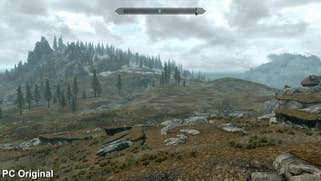
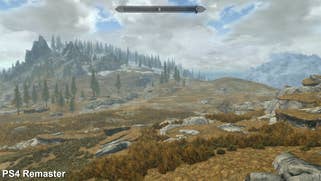




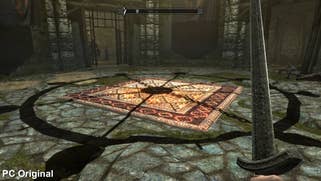
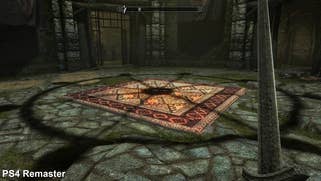

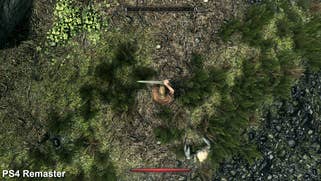


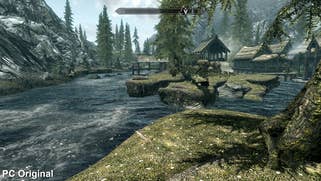
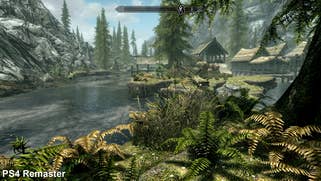
The original Skyrim had a vast array of bugs, issues and glitches - many of which were fixed with mods - but one of the fundamental improvements made to the engine for the Special Edition is the port of the codebase to a 64-bit environment. This is essential for making Skyrim work on the current-gen consoles, but it also reaps dividends for PC users in that it allows mods to scale into much higher memory space than the original game allowed. Of course, mod support is integrated for console users too, although there are limitations and they vary significantly between PS4 and Xbox One.
But what of the actual performance level of the console versions? The 'Rimlag' issues with the PlayStation 3 version are legendary and while the memory management issues were eventually fixed, baseline performance just wasn't particularly great to begin with. On top of that, the Creation Engine's current-gen debut wasn't exactly smooth, with often crippling levels of performance. So from one perspective, there's a huge improvement with Skyrim Special Edition: the game does an excellent job of hitting its 30fps target and proper frame-pacing is enforced for a consistent experience.
Stutter can momentarily intrude, but it's not overly impactful on the experience and it does seem to be more noticeable on the Xbox One version of the game - and we note that the Creation Engine actually appears to be storage-bound on the Microsoft platform in some scenarios, based on prior Fallout 4 testing showing that faster hard drives can actually iron out some intrusive performance issues.
In terms of the rendering basics, Skyrim Special Edition runs at a native 1080p on both platforms with what looks like the same temporal anti-aliasing solution utilised in Fallout 4 - but we're still filtering through Xbox One results in the wake of the revelation that Fallout 4 actually employed a dynamic scaling buffer on the Microsoft platform, adjusting horizontal resolution on the fly according to GPU load. It's something we missed at the time, but came to light via user pixel-counting further on down the line.
Thus far, Xbox One has held firm at its 1080p pixel-count during our tests, and we suspect that there may well be some degree of overhead left over - but almost certainly not enough to sustain 60fps frame-rates, necessitating the 30fps cap. So far, both consoles appear remarkably like-for-like in terms of their presentation, while Bethesda has confirmed that the PS4 Pro version of the game renders at a native 4K resolution. Bearing in mind that this is a 4x resolution boost over the base PS4 version, using a GPU with around 2.3x the processing power (plus other enhancements), there is the suggestion that the standard PlayStation 4 hardware may be somewhat under-utilised here.
Thus far, Skyrim Special Edition looks pretty solid - it can be viewed as an enhanced PC port for the current-gen platforms and in comparison to the PS3 and Xbox 360 versions, there's a night and day improvement in terms of performance and stability, not to mention resolution, art quality and overall levels of detail. We'll report back soon with a look at the PC version, but based on what we've seen so far, it's perhaps fair to say that the improvements there will be more muted - especially for those who've already tapped into the wealth of available mods, which can transform the game. And of course, with PS4 Pro due imminently, we'll be looking into the game's native 4K credentials as soon as we can.
